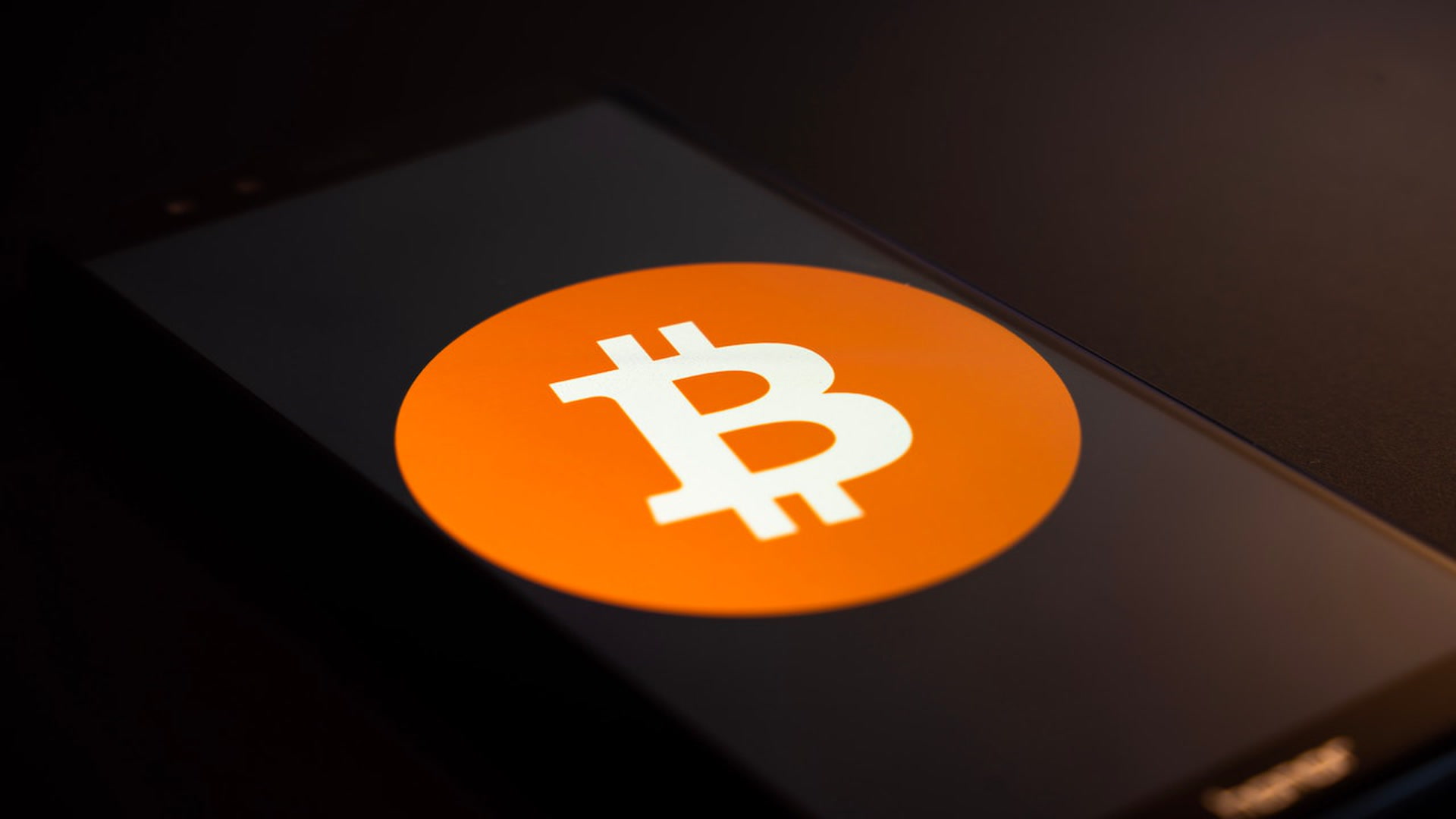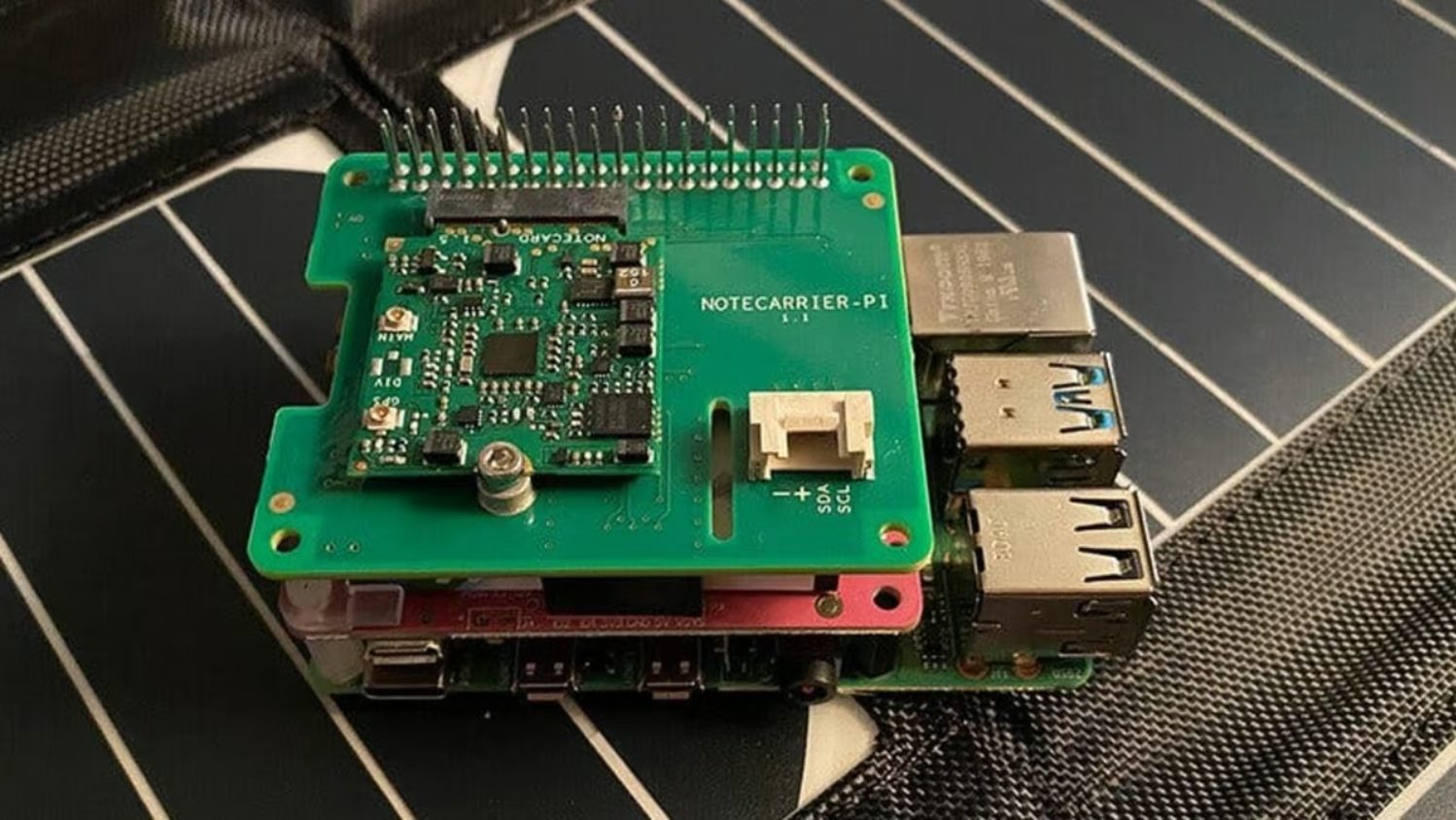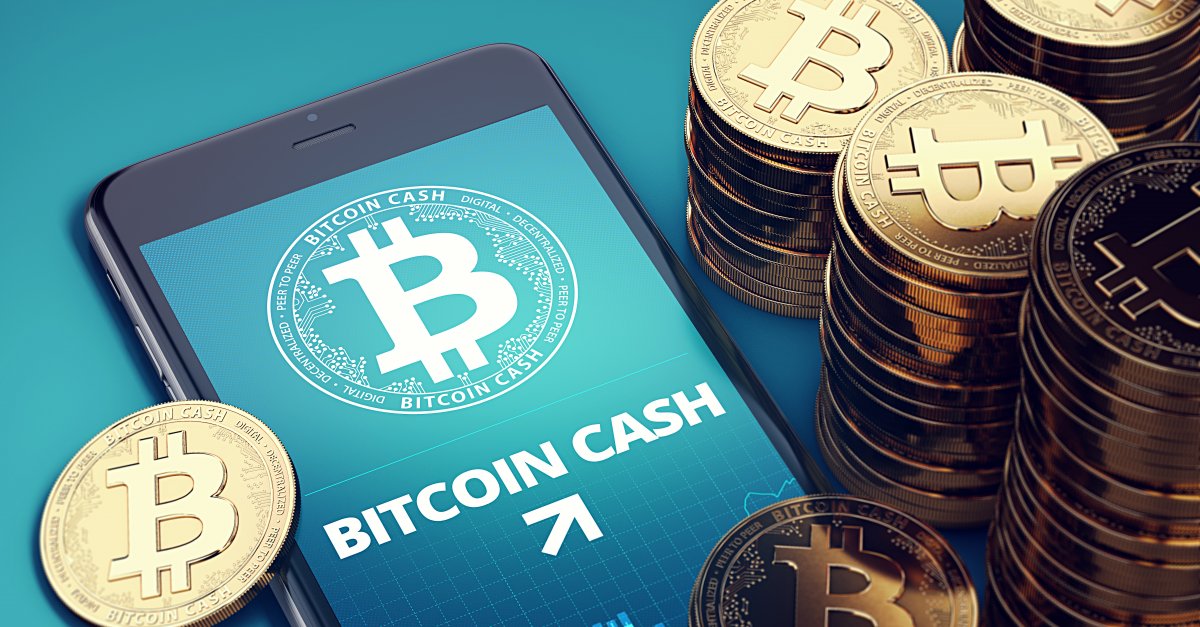Introduction
Welcome to the digital age, where cryptocurrencies like Bitcoin have revolutionized the world of finance. Bitcoin, the most popular digital currency, has gained widespread attention due to its decentralized nature and potential for substantial returns. As the demand for Bitcoin continues to grow, many people are eager to get involved in the mining process to earn their own coins.
While mining Bitcoin traditionally requires specialized hardware and a significant investment, some people wonder if it is possible to mine Bitcoin using a smartphone, specifically an iPhone. After all, smartphones have become incredibly powerful over the years, capable of handling complex tasks with ease. So, is it possible to mine Bitcoin on an iPhone?
The answer is both yes and no. It is technically possible to mine Bitcoin on an iPhone, but the chances of success and profitability are very slim. The process of mining Bitcoin involves solving complex mathematical algorithms that require immense computational power. While modern smartphones have improved in terms of processing capabilities, they still pale in comparison to dedicated mining rigs.
Furthermore, Apple has implemented strict guidelines and limitations on their devices, including iPhones, which prevent mining apps from utilizing the full potential of the hardware. As a result, the mining efficiency on an iPhone is significantly lower compared to specialized mining equipment.
That being said, if you’re someone who wants to dip their toes into the world of Bitcoin mining and understand the process, mining on an iPhone can serve as a learning experience. It can give you a basic understanding of how mining works and allow you to test the waters without making a substantial financial commitment.
In this article, we will explore the concept of mining Bitcoin on an iPhone, the available mining apps, the security considerations, and whether it’s worth the effort. So, if you’re curious about mining Bitcoin on your iPhone, read on to find out more!
Is it possible to mine Bitcoin on iPhone?
The prospect of mining Bitcoin on an iPhone has intrigued many individuals, especially those who want to take advantage of their smartphone’s computing power. However, it’s important to understand the limitations and challenges associated with mining Bitcoin on an iPhone.
While it is technically possible to download and run mining apps on an iPhone, the reality is that the iPhone’s hardware and software restrictions make it extremely inefficient for mining Bitcoin. The iPhone’s CPU and GPU are not designed for the heavy computational work required for mining, and the power consumption involved can quickly drain the battery.
Additionally, Apple’s App Store guidelines prohibit apps from utilizing devices for cryptocurrency mining unless the mining process is taking place off the device, such as cloud mining. This means that mining apps available on the App Store are often limited in functionality and mining capabilities.
Furthermore, mining Bitcoin requires a considerable amount of computational power, which leads to high energy consumption. This not only puts a strain on the iPhone’s battery but also generates a significant amount of heat, which can potentially damage the device.
Another factor to consider is that Bitcoin mining has become highly competitive and sophisticated over the years. Miners use specialized hardware called ASICs (Application-Specific Integrated Circuits) that are specifically designed to mine cryptocurrencies efficiently. These ASICs far surpass the capabilities of smartphones like the iPhone and have made it extremely difficult for individual miners to compete and earn a significant amount of Bitcoin.
It’s also important to note that mining Bitcoin on an iPhone can have a negative impact on the device’s lifespan. The intensive use of the CPU and GPU for mining can cause excessive heat, which can lead to hardware degradation over time. This could result in reduced performance and potentially costly repairs or replacements.
In summary, while it is technically possible to mine Bitcoin on an iPhone, the limitations and challenges make it highly impractical and inefficient. The iPhone’s hardware and software restrictions, along with the intense energy consumption and competition in the mining industry, make it difficult to generate any significant return on investment.
In the next sections of this article, we will explore the concept of Bitcoin mining in more detail, the available mining apps for iPhone users, the essential security considerations, and whether mining Bitcoin on an iPhone is worth the effort. So, if you’re still curious about mining Bitcoin on your iPhone, keep reading!
Understanding Bitcoin mining
Bitcoin mining is the process of validating transactions and adding them to the blockchain, the public ledger that records all Bitcoin transactions. It is an essential part of the Bitcoin network and is responsible for ensuring the integrity and security of the system.
At its core, Bitcoin mining involves solving complex mathematical algorithms using powerful computers. Miners compete with each other to find a solution to the algorithmic puzzle, and the first miner to find the correct solution is rewarded with newly created Bitcoins.
The mathematical algorithms used in Bitcoin mining are designed to be computationally intensive and require a significant amount of processing power. This is to ensure that the process is difficult and time-consuming, preventing malicious actors from manipulating the system.
When a miner successfully solves the algorithm, they create a new block that contains a set of transactions. This block is then added to the blockchain, and the miner is rewarded with a specified number of Bitcoins as well as any transaction fees associated with the transactions in the block.
Bitcoin mining requires not only computational power but also energy. The process of mining involves running specialized software that puts the mining hardware, whether it’s a dedicated mining rig or a smartphone, through intensive calculations. This consumes a significant amount of electricity, leading to high energy costs.
It’s important to note that as more miners join the network, the difficulty of the algorithms increases. This is done to maintain the average time it takes to mine a new block at approximately 10 minutes. If the computational power of the network increases, the difficulty adjusts accordingly, ensuring that new blocks are not created too quickly.
In recent years, Bitcoin mining has become highly competitive, with large-scale mining operations investing in specialized hardware known as ASICs. These ASICs are specifically designed for Bitcoin mining and provide significantly higher computational power and energy efficiency compared to general-purpose CPUs or GPUs.
While it may be tempting to mine Bitcoin using an iPhone or other consumer-grade devices, the reality is that the computational power and energy efficiency of such devices are not sufficient to be competitive in the mining industry. The costs of electricity and hardware maintenance often outweigh the potential rewards.
Overall, understanding the basics of Bitcoin mining is crucial before considering any mining activities. It is a complex and resource-intensive process that requires a substantial investment in hardware, electricity, and cooling infrastructure to be profitable. In the next sections, we will explore the available mining apps for iPhone users, the essential security considerations, and the overall feasibility and profitability of mining Bitcoin on an iPhone.
Security considerations
When it comes to mining Bitcoin on your iPhone or any other device, it’s essential to consider the security implications. The world of cryptocurrencies is known for its potential risks, and mining Bitcoin is no exception. Here are some key security considerations to keep in mind:
1. App Store guidelines and trusted sources: Due to Apple’s restrictions on mining apps, it’s crucial to ensure that you only download mining apps from trusted sources. Stick to reputable app stores or platforms that have stringent security measures in place to minimize the risk of downloading compromised or fraudulent mining apps.
2. Suspicious apps and scam projects: Be cautious of mining apps or projects that promise unrealistic returns or appear too good to be true. Scammers often take advantage of inexperienced miners by promoting malicious apps or investment schemes. Do thorough research and read reviews before trusting any mining app or participating in mining projects.
3. Phishing and malware: Always be vigilant about phishing attempts and malware threats. Scammers may try to gain access to your Bitcoin wallet or personal information by tricking you into visiting fake mining websites or downloading malware-infected apps. Keep your device’s software and security features up to date and be cautious while clicking on suspicious links or downloading unknown files.
4. Secure wallet management: Proper management of your Bitcoin wallet is essential to keep your funds safe. Ensure that you choose a reputable and secure wallet provider and follow best practices for storing your private keys to prevent unauthorized access or theft. Consider using a hardware wallet or a trusted offline storage solution for enhanced security.
5. Network security: Mining Bitcoin requires connecting to a mining pool or network. It’s important to ensure that you choose a reputable and secure mining pool that has robust security measures in place. Opting for mining pools with multi-factor authentication, SSL encryption, and regular security audits can help protect your mining rewards and personal information.
6. Personal device security: Mining Bitcoin on your iPhone may expose your device to additional security risks. Consider setting up a dedicated and secure mining environment, separate from personal data and accounts. Avoid using jailbroken or compromised devices for mining, as they may increase the risk of unauthorized access and compromise your wallet or personal information.
By following these security considerations, you can minimize the risks associated with mining Bitcoin on an iPhone. However, it’s worth noting that mining on a smartphone remains inherently less secure compared to using dedicated mining rigs or secure cloud mining services.
In the next sections, we will explore the available mining apps for iPhone users, how to choose the right mining app, and the steps to set up a Bitcoin wallet and mining app on your iPhone. Additionally, we’ll discuss the best practices for efficient mining and evaluate the overall feasibility and profitability of mining Bitcoin on an iPhone.
Available mining apps for your iPhone
While mining Bitcoin on an iPhone may not be the most efficient or profitable method, there are a few mining apps available for iPhone users who are interested in exploring the process. These apps allow you to participate in mining pools or cloud mining operations. Here are some of the popular mining apps for your iPhone:
1. MobileMiner: MobileMiner is a popular mining app that is compatible with iOS devices, including iPhones. It allows you to mine various cryptocurrencies, including Bitcoin, Litecoin, and Ethereum. It supports mining with both CPU and GPU, although the mining efficiency on an iPhone’s hardware is quite limited.
2. MinerGate: MinerGate is another well-known mining app that supports multiple cryptocurrencies, including Bitcoin. It allows you to mine using your iPhone’s CPU, GPU, or even cloud mining. MinerGate provides a user-friendly interface and comprehensive mining statistics to help you track your mining progress.
3. AA Miner: AA Miner is a lightweight mining app that supports mining Bitcoin and other cryptocurrencies. It offers features such as mining pool selection, mining intensity adjustment, and even the ability to mine in the background while you use your iPhone for other purposes.
4. StormGain: StormGain is a cryptocurrency trading and mining platform that offers a mobile app compatible with iOS devices. While primarily focused on trading, StormGain also provides cloud mining services that allow you to mine Bitcoin and other cryptocurrencies without the need for specialized mining hardware.
These are just a few examples of the mining apps available for iPhone users. It’s important to note that the mining capabilities and efficiency of these apps on an iPhone may be limited due to the hardware and software restrictions imposed by Apple.
Before using any mining app, it’s essential to research and read reviews to ensure the legitimacy and security of the app. Pay attention to user feedback and look for apps that have a strong reputation for reliability and transparent mining practices.
Keep in mind that mining using a smartphone, including an iPhone, is unlikely to generate significant profits or substantial amounts of Bitcoin. It is best viewed as a learning experience or a way to participate in the mining process on a smaller scale.
In the next sections, we will discuss how to choose the right mining app for your needs, the steps to set up a Bitcoin wallet and mining app on your iPhone, and the best practices for efficient mining.
How to choose the right mining app
When it comes to choosing the right mining app for your iPhone, there are several factors to consider. While the options may be limited due to Apple’s restrictions, it’s important to select a reliable and reputable app that aligns with your mining goals. Here are some considerations to keep in mind:
1. Compatibility: Ensure that the mining app you choose is compatible with your iPhone’s operating system version. Check the app’s requirements and make sure it supports the iOS version running on your device.
2. Security: Prioritize security when selecting a mining app. Look for apps that have a strong track record of security and have measures in place to protect your personal information and mining rewards. Consider reading reviews and doing thorough research to verify the app’s security features.
3. Reputation: Choose a mining app with a good reputation in the cryptocurrency community. Look for apps that have positive user reviews, a strong online presence, and a professional development team. Be cautious of new or unknown apps that may lack credibility or have a higher risk of being fraudulent.
4. Mining options: Consider your mining preferences and goals when selecting an app. Some apps may support different mining methods, such as CPU mining, GPU mining, or cloud mining. Determine which mining method aligns with your resources and mining capabilities.
5. User interface: A user-friendly interface can greatly enhance your mining experience. Look for apps with intuitive and easy-to-navigate interfaces that provide clear information on your mining progress, earnings, and any fees associated with mining.
6. Mining pool support: If you plan to mine in a pool, ensure that the app supports the mining pools you are interested in joining. Check if the app allows you to easily switch between different pools or if it restricts you to a specific pool.
7. Additional features: Some mining apps offer additional features, such as monitoring tools, real-time market data, or integration with cryptocurrency wallets. Consider whether these additional features are important to you and assess their value in relation to your mining goals.
8. Community support: Look for mining apps that have an active and supportive community. Having access to a community of fellow miners can be valuable for troubleshooting issues, staying updated on industry trends, and learning from experienced miners.
By considering these factors, you can choose the right mining app that suits your needs and preferences. Remember that mining on an iPhone may not be the most efficient method, so managing your expectations is crucial.
In the next sections, we will explore the steps to set up a Bitcoin wallet and mining app on your iPhone, as well as discuss the best practices for efficient mining to maximize the limited mining capabilities of an iPhone.
Setting up a Bitcoin wallet
Before you can start mining Bitcoin on your iPhone, it’s essential to set up a Bitcoin wallet. A Bitcoin wallet is a digital wallet that allows you to securely store, send, and receive Bitcoin. Here are the steps to set up a Bitcoin wallet on your iPhone:
1. Research and choose a wallet: There are several types of Bitcoin wallets available, including hardware wallets, software wallets, and online wallets. Research different wallet options and choose the one that best fits your needs in terms of security, convenience, and accessibility.
2. Download a reputable wallet app: Visit the App Store on your iPhone and search for a reputable Bitcoin wallet app. Look for apps that have good reviews, strong security features, and a user-friendly interface. Popular wallet apps for iOS include Coinbase, Blockchain Wallet, and Breadwallet.
3. Create a new wallet: Open the downloaded wallet app and follow the on-screen instructions to create a new wallet. This typically involves providing a secure password and generating a unique recovery phrase. Make sure to write down and store your recovery phrase in a safe place as it will be crucial for recovering your wallet in case of loss or device replacement.
4. Secure your wallet: Once your wallet is created, take additional steps to enhance its security. Enable two-factor authentication (2FA) if available, which adds an extra layer of protection. Set a strong and unique password and consider using biometric authentication methods like Touch ID or Face ID if supported by your wallet app.
5. Backup your wallet: Regularly back up your wallet to ensure that you can recover your funds in case of device failure, loss, or theft. Follow the backup instructions provided by your wallet app and store the backup in a separate, secure location.
6. Obtain a receiving address: Your Bitcoin wallet will provide you with a unique receiving address, which you can share with others to receive Bitcoin. Copy your receiving address from your wallet app and keep it readily accessible for future use.
7. Securely store your wallet information: Treat your Bitcoin wallet information with the same level of security as you would treat your cash or valuable belongings. Avoid sharing your wallet recovery phrase, private keys, or any other sensitive information with others. Be cautious of phishing attempts or scams that may try to trick you into revealing your wallet details.
Once your Bitcoin wallet is set up and secured on your iPhone, you’re ready to connect it with a mining app and start mining Bitcoin. In the next sections, we will explore the process of setting up a mining app on your iPhone, as well as discuss best practices for efficient mining to maximize your mining capabilities.
Setting up the mining app
Once you have a Bitcoin wallet set up on your iPhone, the next step is to set up a mining app that is compatible with your device. Here’s a step-by-step guide to help you set up the mining app:
1. Research and choose a mining app: Research the available mining apps for iPhones and choose one that best suits your needs and preferences. Consider factors such as compatibility, security features, user interface, and mining options offered by the app.
2. Download and install the mining app: Visit the App Store and download the selected mining app. Wait for the app to install on your iPhone.
3. Open the mining app: Once the mining app is installed, open it on your iPhone. You may be prompted to sign up or log in using your account details or create a new account if necessary.
4. Configure the mining app: Follow the instructions provided by the mining app to configure your mining settings. This usually involves providing your Bitcoin wallet address to receive mining rewards and selecting the mining pool you want to join, if applicable.
5. Customize the mining settings: Some mining apps allow you to customize settings such as mining intensity or power consumption. Adjust these settings based on your preferences and the capabilities of your device.
6. Start mining: Once you have configured the mining settings, you can start the mining process. The app will begin using your iPhone’s computing power to contribute to the mining network. Remember to keep your device connected to a power source, as mining can consume significant energy and drain the battery quickly.
7. Monitor and track your mining progress: Most mining apps provide real-time information about your mining progress, including hash rate, shares submitted, and estimated earnings. Monitor these stats to ensure your app is functioning properly and to track your mining performance.
8. Stay updated: Keep your mining app updated to ensure you have the latest features and patches. Developers often release updates to improve performance and address any security vulnerabilities that may arise.
Setting up the mining app on your iPhone is just the first step. It’s important to keep in mind that mining on an iPhone may not yield significant profits due to device limitations. Therefore, manage your expectations and view it as a learning experience or a small-scale participation in the mining process.
In the next section, we will discuss best practices for efficient mining, which can help you optimize the limited mining capabilities of your iPhone and make the most out of your mining efforts.
Best practices for efficient mining
Although mining Bitcoin on an iPhone may not be the most efficient method, there are several best practices you can follow to optimize your mining efforts and ensure better efficiency. Consider the following tips to maximize your mining capabilities:
1. Choose the right mining algorithm: Different cryptocurrencies use different mining algorithms. Ensure that the mining app you use on your iPhone is specifically designed for Bitcoin mining. Using a mining app that supports the SHA-256 algorithm, which is used by Bitcoin, will ensure optimal efficiency.
2. Utilize mining pools: Joining a mining pool allows you to combine computational power with other miners, increasing your chances of earning rewards. Look for established and reputable mining pools that offer fair rewards and have a low fee structure. This can help you achieve more consistent and efficient mining results.
3. Monitor temperature and manage heat: Mining Bitcoin can generate a considerable amount of heat, which can negatively impact your iPhone’s performance. Keep an eye on the device’s temperature and avoid mining in environments with poor ventilation. Consider using cooling pads or fans to dissipate heat and minimize the risk of overheating.
4. Optimize power settings: Adjust the power settings on your iPhone to maximize mining efficiency. Lower the screen brightness and disable unnecessary background processes or apps that consume battery power. Additionally, ensure that your iPhone remains connected to a power source during the mining process to avoid interruptions due to battery drain.
5. Keep your software up to date: Regularly update your iPhone’s operating system and the mining app to utilize the latest optimizations and security patches. Developers often release updates that can improve performance and address any issues that may impact mining efficiency.
6. Manage network connectivity: Ensure that your iPhone is connected to a stable and high-speed internet connection during the mining process. Poor network connectivity can lead to rejected shares or interruptions in mining, reducing overall efficiency.
7. Educate yourself about mining: Stay informed about the latest trends and developments in the world of Bitcoin mining. Follow reputable sources, join mining communities or forums, and engage with experienced miners to learn from their insights and best practices. This knowledge can help you optimize your mining strategies and make informed decisions.
8. Consider alternative mining methods: If you’re committed to mining cryptocurrencies, explore alternative methods such as cloud mining or investing in dedicated mining rigs. These methods provide higher computational power and energy efficiency, increasing your chances of earning greater rewards.
Keep in mind that even with these best practices, mining Bitcoin on an iPhone will still have limited efficiency and profitability compared to dedicated mining operations. It’s important to manage your expectations and view iPhone mining as a way to participate in the mining process on a smaller scale or for educational purposes.
In the next section, we will evaluate the overall feasibility and profitability of mining Bitcoin on an iPhone and discuss whether it is worth the effort.
Risk vs reward: Is mining Bitcoin on iPhone worth it?
When considering whether mining Bitcoin on an iPhone is worth it, it’s important to weigh the potential rewards against the associated risks and limitations. Here are some key factors to consider:
1. Limited mining capabilities: iPhones are not designed for mining cryptocurrencies like Bitcoin. The hardware and software restrictions imposed by Apple result in significantly lower mining efficiency compared to dedicated mining rigs. As a result, the chances of earning substantial profits are minimal.
2. High energy consumption: Mining Bitcoin requires a considerable amount of computational power, which translates to high energy consumption. This not only puts a strain on your iPhone’s battery but also leads to increased energy costs. The potential rewards from iPhone mining may not offset these expenses.
3. Intense competition: Bitcoin mining has become highly competitive, with large-scale mining operations employing specialized hardware known as ASICs. These ASICs provide significant computational power and energy efficiency, making it extremely difficult for individual iPhone miners to compete and earn substantial rewards.
4. Risk of device damage: Mining Bitcoin on an iPhone can generate excessive heat, which can potentially damage the device’s hardware over time. The increased workload and heat generated by mining may lead to reduced performance and potentially costly repairs or replacements.
5. Potential for learning and experimentation: While the profitability of mining Bitcoin on an iPhone is limited, using an iPhone for mining can serve as a learning experience. It allows you to gain a basic understanding of the mining process, experiment with mining settings, and explore the world of cryptocurrencies without making a significant financial commitment.
6. Alternative mining methods: If you’re interested in mining cryptocurrencies more seriously, consider alternative methods such as cloud mining or investing in dedicated mining equipment. These methods provide higher computational power and energy efficiency, significantly increasing the potential for earning rewards.
In summary, mining Bitcoin on an iPhone is not a feasible or profitable venture compared to dedicated mining rigs. The hardware limitations, energy consumption, intense competition, and potential risks outweigh the potential rewards. However, if you view iPhone mining as a way to learn and experiment with the mining process on a smaller scale, it can still be a valuable experience.
Ultimately, before engaging in any mining activities, it’s important to do thorough research, manage your expectations, and assess your willingness to take on the associated risks and costs. Understanding the limitations and exploring alternative options can help you make informed decisions about the feasibility of mining Bitcoin on an iPhone.
Conclusion
Mining Bitcoin on an iPhone may seem enticing, given the device’s compact size and computing capabilities. However, the limitations imposed by Apple’s hardware and software, as well as the intense competition and high energy consumption involved in Bitcoin mining, make it an inefficient and impractical choice.
While mining Bitcoin on an iPhone may not yield significant profits or rewards, it can serve as a learning experience for those curious about the mining process. It allows individuals to gain a basic understanding of Bitcoin mining, experiment with mining settings, and explore the world of cryptocurrencies without a substantial financial commitment.
For those interested in mining cryptocurrencies more seriously, alternative methods such as cloud mining or investing in dedicated mining equipment offer higher computational power and better energy efficiency. These methods provide a greater potential for earning rewards and a more profitable mining experience.
When considering iPhone mining, it’s crucial to manage expectations, assess the associated risks and costs, and make informed decisions. Research and choose reputable mining apps, set up secure Bitcoin wallets, and follow best practices for efficient mining to optimize the limited mining capabilities of an iPhone.
Remember that the world of cryptocurrencies is constantly evolving, and mining practices are always evolving along with it. As technology advances and new innovations emerge, the feasibility of mining Bitcoin on an iPhone may change, so it’s important to stay informed and adapt to the evolving landscape.
In conclusion, while mining Bitcoin on an iPhone may not be worth it in terms of profitability, it can still serve as an educational endeavor. Embrace the opportunity to learn and experiment with mining on a smaller scale, but for serious miners seeking higher rewards, exploring alternative methods with more powerful mining equipment is recommended.

























